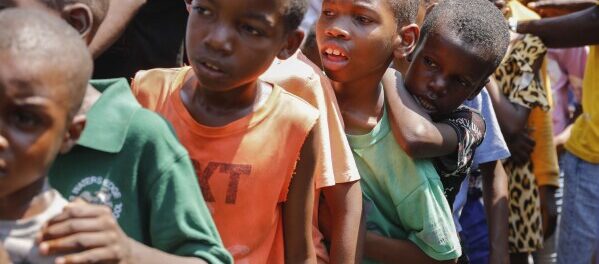Hunger in Haiti reaches historic high with one-in-two Haitians now in acute hunger

This was reported by FAO, WFP, the Coordination Nationale de la Sécurité Alimentaire (CNSA) of Haiti, through the publication of the latest Integrated Food Security Phase Classification (IPC) report.
September 30, 2024, Port-au-Prince –Haiti today marks another grim milestone, as the number of people facing acute hunger has now reached half of the country’s population, according to the latest Integrated Food Security Phase Classification (IPC) analysis.
As Haiti continues to grapple with a significant security crisis, 5.4 million people struggle to feed themselves and their families every day, representing one of the highest proportions of acutely food insecure people in any crisis worldwide. Out of these, two million are in the grips of emergency levels of hunger (IPC Phase 4), facing extreme food shortages, acute malnutrition and high disease levels.
At least 6,000 internally displaced people (IDP) living in temporary shelters in Haiti’s capital after fleeing their homes now face catastrophic levels of food insecurity (IPC Phase 5), according to the latest IPC report. This means people are facing starvation, death, destitution, and extremely critical acute malnutrition levels.
The latest IPC report covers August 2024-February 2025 and was released by Haiti’s Coordination Nationale de la Sécurité Alimentaire (CNSA), the Food and Agriculture Organization of the United Nations (FAO) and the United Nations World Food Programme (WFP). It provides a common scale to measure the severity and magnitude of acute hunger.
“With over 75 percent of Haiti’s most food-insecure people living in rural areas, providing crisis-affected households – particularly internally displaced people (IDPs) and their host communities – with timely and effective emergency agricultural support is a cost-effective solution for them to quickly produce their own food”, said Mario Lubetkin, Assistant Director General and FAO Regional Representative for Latin America and the Caribbean.
Humanitarian food agencies and NGOs in Haiti are short of US$ 230 million to implement programmes until the end of the year – while families displaced by this year’s surge in violence are on the frontline of rising hunger. Humanitarian organizations continue to face challenges in accessing communities living in areas controlled by armed groups.
Violent attacks and fighting linked to armed groups spiked in Port-au-Prince in early 2024, forcing shipping and airport operations to temporarily grind to a halt. Hundreds of thousands of people have forced from their homes in search of safety; in the past six months the number of IDPs has nearly doubled to more than 700,000. Many IDPs have taken shelter in nearly 100 sites across the capital, including in schools and public buildings. IDP sites are often overcrowded and unsanitary, creating a high risk of disease spread, while traumatized families who have seen their incomes and livelihoods vanish struggle to buy enough food amid spiralling prices.
WFP has assisted 1.35 million people country-wide so far in 2024, including through emergency assistance, school meals, social protection, and resilience activities. Families with pregnant/breastfeeding women and/or children under five receive additional support, to prevent malnutrition. With additional resources, WFP stands ready to scale up emergency food assistance.
Many thanks.
Leave a comment
You must be logged in to post a comment.